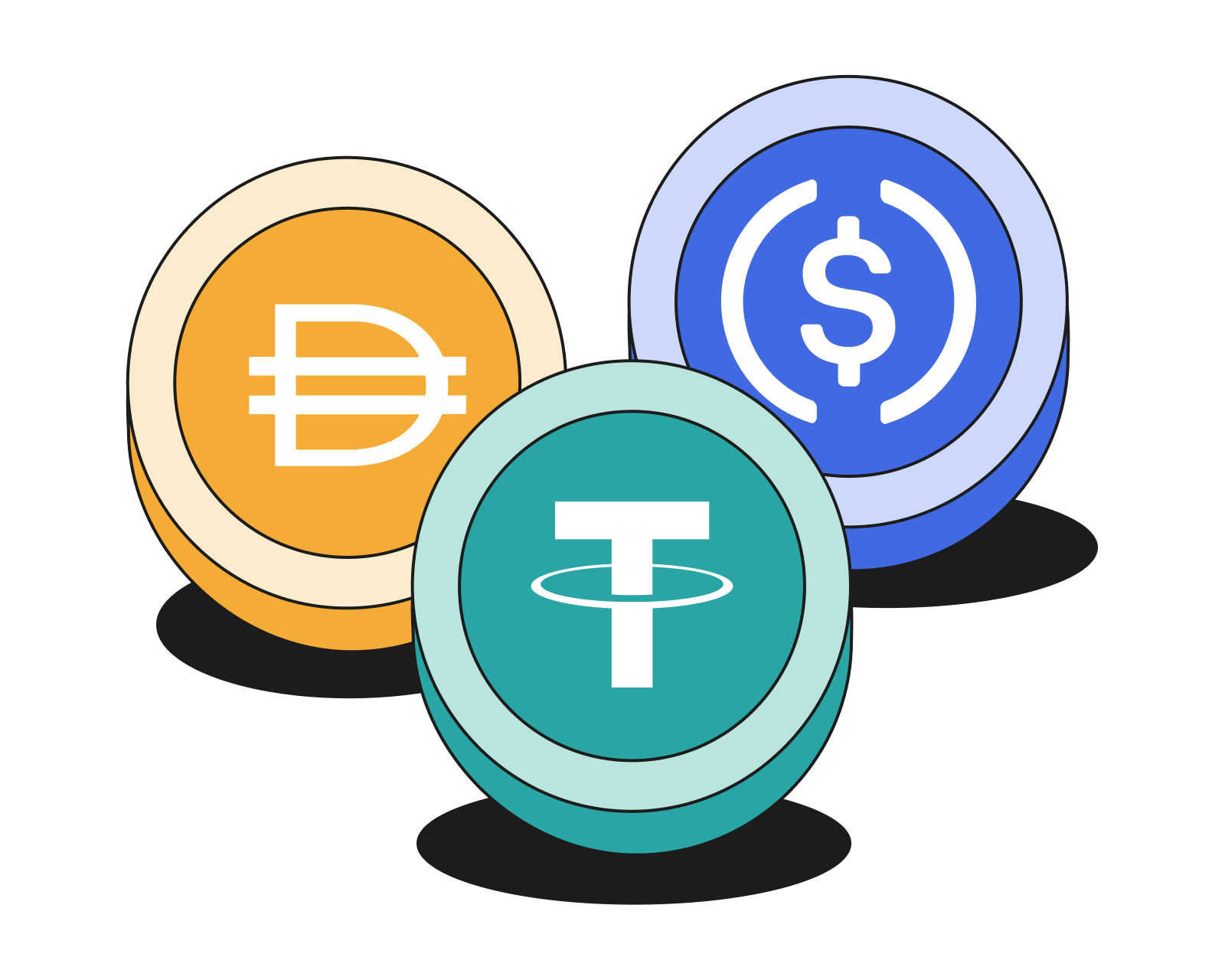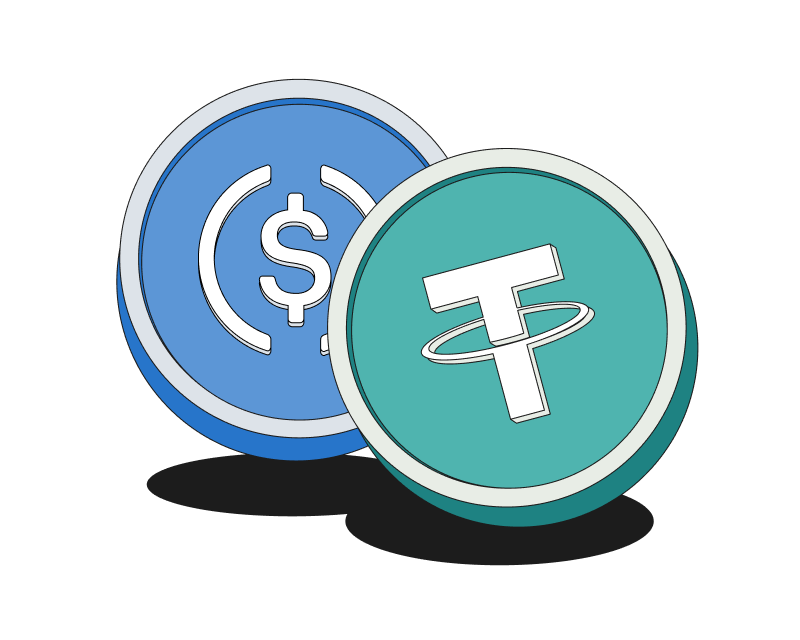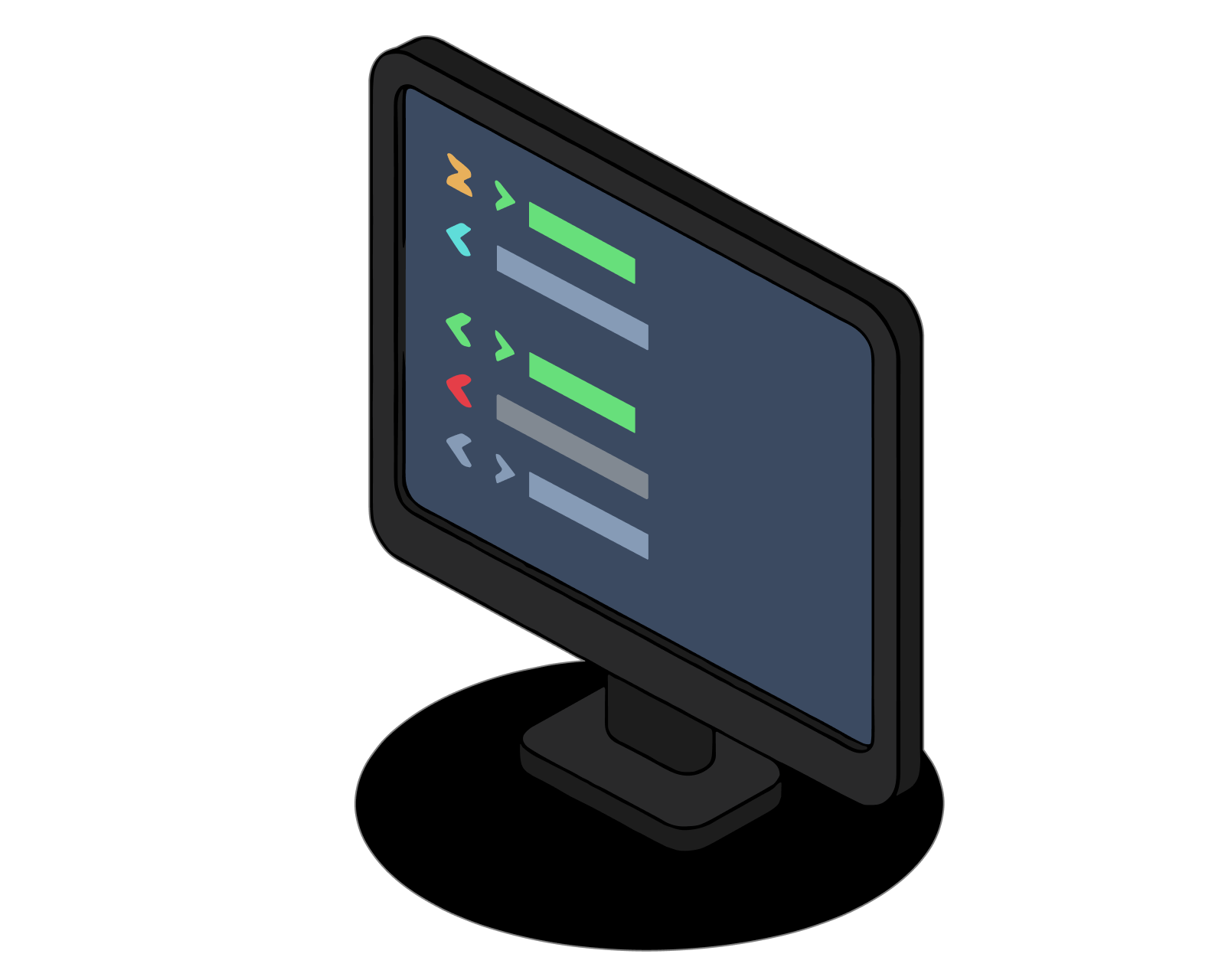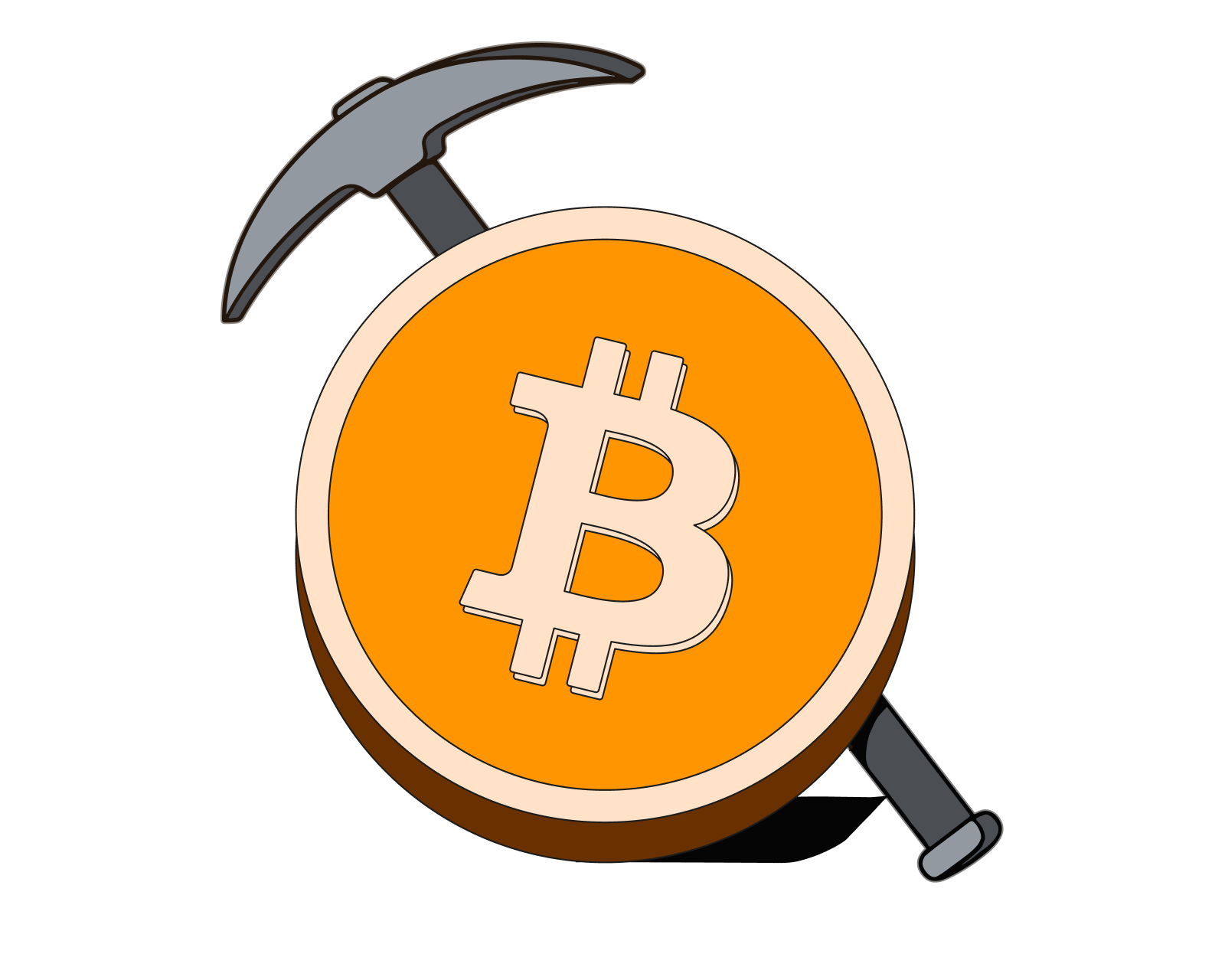Stablecoins: USDT, USDC, USDE, DAI, BUSD, USDD, PYUSD, TUSD, RLUSD, UST, and FRAX

Table of Contents
Stablecoins: A Deep Dive into the Crypto and DeFi Ecosystem
Stablecoins are cryptocurrencies designed to maintain a stable value, usually pegged to a fiat currency like the US dollar. They are a critical component of both the broader cryptocurrency ecosystem and the more specialized DeFi space. This article provides a comprehensive overview of stablecoins, focusing on prominent examples, exploring their mechanisms, risks, use cases, and impact.
Get started with a quick introduction to cryptocurrencies. Understand the difference between altcoins and stablecoins in What are altcoins? and What are Stablecoins?. Want to explore decentralized finance? Learn more about DeFi and its impact on crypto here.
Understanding Stablecoin Mechanisms
Stablecoins achieve price stability through various mechanisms:
-
Fiat-Collateralized: Backed by reserves of fiat currency (e.g., USD) held in bank accounts. Examples: USDT, USDC, BUSD, TUSD, USDD. This is the most common type.
-
Crypto-Collateralized: Backed by other cryptocurrencies as collateral, often over-collateralized to mitigate volatility. Example: DAI.
-
Algorithmic: Maintain stability through algorithms that control supply based on market conditions. These are generally more complex and carry higher risks. Example: UST (failed), FRAX.
Exploring Prominent Stablecoins
-
Tether (USDT): The largest stablecoin by market capitalization, pegged to the US dollar. Widely used in the crypto market for trading, remittances, and as a hedge against volatility. Issued by Tether Limited, USDT operates across multiple blockchains, including Ethereum, Tron, and Solana. While it provides liquidity and stability, Tether has faced controversy over the transparency of its reserves, with ongoing scrutiny regarding whether its backing fully supports the circulating supply. Despite this, it remains the largest stablecoin by market capitalization and plays a crucial role in global crypto markets.
-
USD Coin (USDC): A regulated stablecoin pegged 1:1 to the US dollar, designed for fast and secure digital transactions. Issued by Circle and backed by audited reserves of cash and short-term US government bonds, making it one of the most transparent stablecoins in the market. Operating on multiple blockchains, including Ethereum, Solana, Avalanche, and Polygon, it is widely used for trading, payments, and DeFi applications, offering a transparent and compliant alternative to USDT.
-
DAI: A decentralized, crypto-collateralized stablecoin managed by MakerDAO, maintaining its USD peg through over-collateralization. In 2024, MakerDAO rebranded to Sky, introducing SKY, the new governance token, where each MKR can be upgraded to 24,000 SKY. Additionally, Sky Dollar (USDS) replaced DAI, offering a stablecoin with access to native token rewards, allowing users to upgrade DAI to USDS 1:1. These changes aim to enhance decentralization and incentivize participation in the evolving Sky ecosystem.
-
Binance USD (BUSD): A regulated stablecoin pegged 1:1 to the US dollar, issued by Paxos in partnership with Binance. It was approved by the New York State Department of Financial Services (NYDFS) and was backed by cash and US Treasury reserves. BUSD was widely used for trading, payments, and DeFi, but due to regulatory pressure, Paxos halted new issuance in 2023, leading to its gradual phase-out. Existing BUSD remains redeemable, but users are encouraged to transition to other stablecoins.
-
Ethena USDe (USDe): A next-generation stablecoin combining the reliability of crypto collateral with algorithmic adjustments for stability. It uses decentralized protocols like smart contracts to minimize its reliance on traditional banking systems. USDe's hybrid design aims to provide a more secure and scalable stablecoin for DeFi platforms, payments, and long-term storage of value.
-
Decentralized USD (USDD): An algorithmic stablecoin launched by Tron DAO in 2022, designed to maintain a 1:1 peg with the US dollar. Unlike fiat-backed stablecoins, USDD is partially collateralized with crypto assets like TRX, BTC, and USDT, relying on algorithms and arbitrage mechanisms to stabilize its price. USDD operates on the Tron blockchain and is also available on Ethereum and BNB Chain. However, like other algorithmic stablecoins, it has faced concerns about depegging risks and its reserve transparency.
-
Ripple USD (RLUSD): A USD-backed stablecoin launched by Ripple in December 2024. Fully backed by U.S. dollar deposits, government bonds, and cash equivalents, RLUSD maintains a 1:1 peg to the USD. It operates on both the XRP Ledger and Ethereum, enhancing liquidity for cross-border payments and DeFi. Ripple aims to position RLUSD as a competitor to USDT and USDC.
-
TrueUSD (TUSD): A stablecoin pegged to the US dollar. It is issued by Archblock (formerly TrustToken) and is fully backed by fiat reserves, with third-party attestations to ensure transparency. TUSD operates on multiple blockchains, including Ethereum, Tron, and BNB Chain, and is commonly used for trading, payments, and DeFi applications. While it was once a widely trusted stablecoin, it has faced concerns over liquidity and regulatory scrutiny in recent years.
-
Frax (FRAX): A partially collateralized, partially algorithmic stablecoin pegged to the US dollar. It combines crypto reserves (e.g., USDC) and algorithmic mechanisms to maintain stability. Part of the Frax Finance ecosystem, it offers scalability, decentralization, and capital efficiency, alongside tokens like Frax Ether (frxETH) and Frax Shares (FXS) for governance and staking.
-
PayPal USD (PYUSD): A stablecoin issued by PayPal, pegged to the USD. A relatively new entrant with the potential for widespread adoption.
-
TerraUSD (UST): A failed algorithmic stablecoin. It was designed to maintain a 1:1 peg to the US dollar through its relationship with LUNA, the native token of the Terra blockchain. In May 2022, UST lost its peg, triggering a catastrophic collapse that wiped out billions in value and led to LUNA’s crash. The event exposed the risks of algorithmic stablecoins, serving as a cautionary tale about the importance of sustainable collateralization and market stability.
-
STASIS EURO (EURS): is a Euro-backed stablecoin designed to bring the price stability of the Euro to blockchain transactions. Created by STASIS, it’s widely used for trading in European markets and is commonly used by businesses seeking a hedge against the volatility of cryptocurrencies and USD-based assets. Its inherent connection to the Euro makes it a viable alternative to traditional money transfers for cross-border transactions in the EU.
Risks and Considerations
-
Counterparty Risk (for fiat-collateralized): Reliance on centralized entities holding reserves creates counterparty risk. Learn more about custodial and self-custodial wallets.
-
Regulatory Uncertainty: The regulatory landscape for stablecoins is evolving, creating uncertainty.
-
Smart Contract Risks (for crypto-collateralized): Smart contract vulnerabilities can be exploited.
-
De-pegging Risk (for algorithmic): Algorithmic stablecoins can lose their peg, as seen with UST. Understanding liquidity and volatility is crucial.
Stablecoin Use Cases
-
Trading: Used as a stable trading pair on both centralized exchanges (CEXs) and decentralized exchanges (DEXs), facilitating efficient trading and arbitrage opportunities. Learn how exchanges work, how to use a DEX and how to provide liquidity.
-
DeFi: Stablecoins are essential in decentralized finance (DeFi), enabling lending, borrowing, yield farming, and crypto insurance. They provide stability and liquidity, making them widely used in DeFi lending, with users able to lend or borrow assets. Yield farming allows users to maximize returns through liquidity provision and DeFi farming strategies. Additionally, crypto insurance helps manage risk, offering protection against hacks and smart contract failures and guidance on buying insurance in DeFi.
-
Payments and Remittances: Used for fast and low-cost cross-border payments and everyday transactions.
Choosing a Stablecoin
Consider these factors when choosing a stablecoin: stability, transparency, decentralization, security, liquidity, and fees. Understanding APY is also important.
Conclusion
Stablecoins play a vital role in the crypto and DeFi ecosystem, providing stability, liquidity, and accessibility for traders, investors, and users. However, their effectiveness depends on their mechanisms, collateralization models, and regulatory landscape. By understanding how they work, their risks, and their diverse use cases, you can make informed decisions and navigate the evolving world of digital assets with confidence.
Learn more about related concepts like ERC-20 tokens, Bitcoin, Bitcoin transactions, and decentralized Apps (dApps).
Related guides
Start from here →
What are stablecoins?
Learn about the key US-dollar crypto 'stablecoins,' how they remain stable, what they're used for, ways to earn interest on them, and where to get them.
Read this article →
What are stablecoins?
Learn about the key US-dollar crypto 'stablecoins,' how they remain stable, what they're used for, ways to earn interest on them, and where to get them.

What is DeFi?
Learn what makes decentralized finance (DeFi) apps work and how they compare to traditional financial products.
Read this article →
What is DeFi?
Learn what makes decentralized finance (DeFi) apps work and how they compare to traditional financial products.

What is a DEX?
A decentralized exchange (DEX) is a type of exchange that specializes in peer-to-peer transactions of cryptocurrencies and digital assets. Unlike centralized exchanges (CEXs), DEXs do not require a trusted third party, or intermediary, to facilitate the exchange of cryptoassets.
Read this article →
What is a DEX?
A decentralized exchange (DEX) is a type of exchange that specializes in peer-to-peer transactions of cryptocurrencies and digital assets. Unlike centralized exchanges (CEXs), DEXs do not require a trusted third party, or intermediary, to facilitate the exchange of cryptoassets.

What are ERC-20 tokens?
Learn the basics of the Ethereum token standard, what ERC-20 tokens are used for, and how they work.
Read this article →
What are ERC-20 tokens?
Learn the basics of the Ethereum token standard, what ERC-20 tokens are used for, and how they work.

What's a smart contract?
Get the basics on the "software" that runs on decentralized networks.
Read this article →
What's a smart contract?
Get the basics on the "software" that runs on decentralized networks.

How do bitcoin transactions work?
Understand how the Bitcoin public blockchain tracks ownership over time. Get clarity on key terms like public & private keys, transaction inputs & outputs, confirmation times, and more.
Read this article →
How do bitcoin transactions work?
Understand how the Bitcoin public blockchain tracks ownership over time. Get clarity on key terms like public & private keys, transaction inputs & outputs, confirmation times, and more.
STAY AHEAD IN CRYPTO
Stay ahead in crypto with our weekly newsletter delivering the insights that matter most
Weekly crypto news, curated for you
Actionable insights and educational tips
Updates on products fueling economic freedom
No spam. Unsubscribe anytime.



Start investing safely with the Bitcoin.com Wallet
Over wallets created so far
Everything you need to buy, sell, trade, and invest your Bitcoin and cryptocurrency securely

© 2025 Saint Bitts LLC Bitcoin.com. All rights reserved


